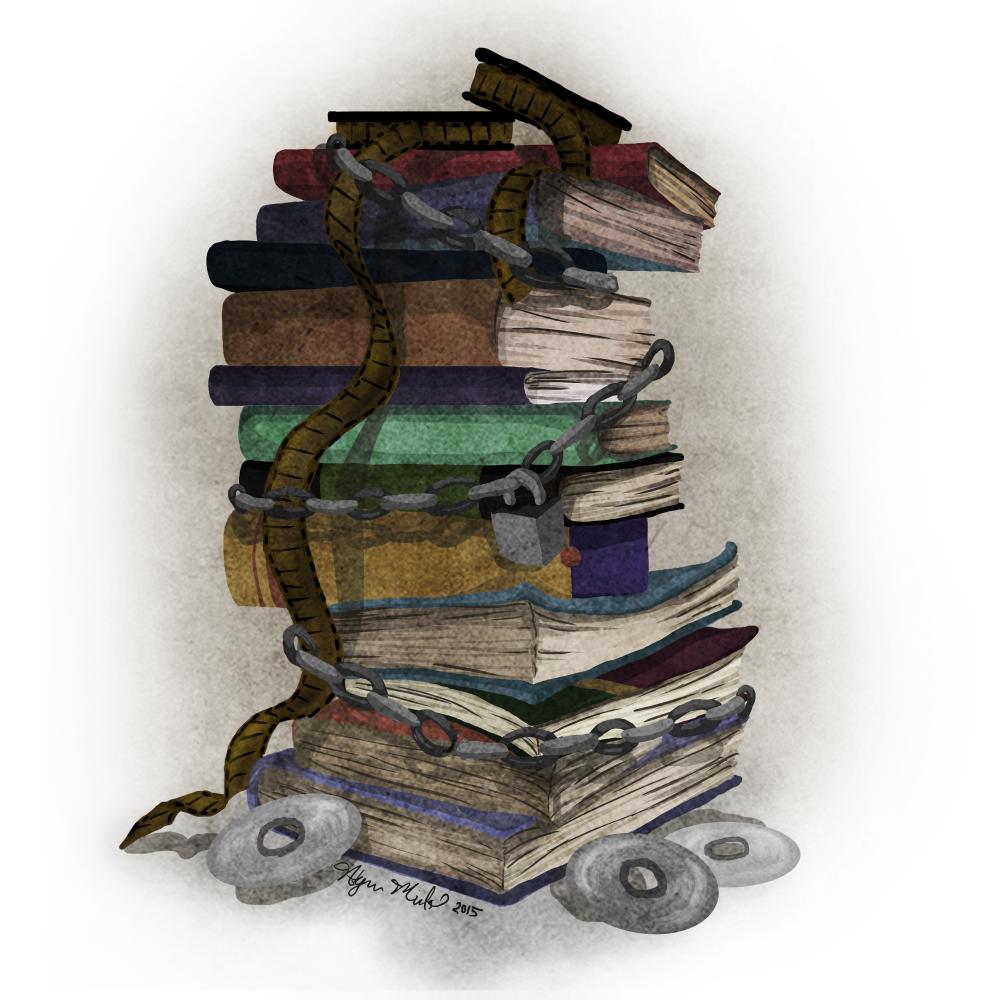The last week of September found America in celebration of banned books. This tradition began in 1982 when library activist Judith King led the mission to teach First Amendment rights and promote intellectual freedom at schools, libraries and bookstores. Censorship, although traditionally thought of in terms of books, now spans across all platforms, from books to social media.
Your childhood memories may be splattered with vague recollections of library displays of books that were banned in the past, including “The Adventures of Huckleberry Finn,” “Looking for Alaska” and “A Wrinkle in Time,” among hundreds of others. Books are usually banned or challenged due to profanity, Satanism, sex, racism, objectionable religious views or violence — or any other reason declared by the banning authority. "Harry Potter," for example, is one of the most banned books of the 21st century. The tale has been criticized for promoting witchcraft, lying, disobeying authority figures, breaking rules and for being too scary. Some dissenters of the boy wizard’s shenanigans decided to start burning copies of his saga.
Banned vs. Challenged Books
Since 1982, more than 11,300 books have been challenged. In 2014 alone, 311 were challenged, with many more issues going unreported. According to the American Library Association, a challenged book is a “formal, written complaint, filed with a library or school requesting that materials be removed because of content or appropriateness.” This does not mean that the book has been completely banned, but a complaint has been filed with the hopes of restricting access to it.
“The purpose of banning a book is solely to ‘shelter’ those who may want to read it — and although a parent should be allowed to determine what their child can and cannot read, they should not determine what another child can or cannot read, which is done when a book is censored,” RIT 2015 graduate Kelly Gatesman, who did her capstone project on censorship in America, said.
Gatesman went on to cite a 2014 case she had researched in which police were called when students distributed copies of "The Absolutely True Diary of a Part-Time Indian" after it had been banned from Junior Mountain High School. There were concerns over whether or not students had obtained parental permission to read the book, which the school required for banned books. The amount of censorship Gatesman discovered when researching her project was overwhelming. There are new cases of books being banned or challenged on an almost daily basis.
There are large groups of people within the United States that hope to restrict access to information. According to TIME Magazine, 9,500 copies of "Operation Dark Heart," a memoir by Lt. Col. Anthony Shaffer about his experiences in Afghanistan, were burned in 2010 by the Department of Defense, and the publisher was asked to further alter what had been written for the second edition.
The Importance of Reading Banned Books
Censoring and attempting to censor books by banning or challenging them is still prevalent today. Books provide us entertainment and expose us to opinions to which we wouldn’t otherwise be exposed. Reading books that have been banned or censored allows us to embrace possibilities and think in different ways, even if they are contrary to our own.
In most cases, we now see these challenges as silly, imprudent or misguided. We live in an age in which getting a book is incredibly simple. If a library bans a book, the same book can be easily obtained online.
“It is important to celebrate your freedom to read and your freedom to information. By allowing books to be banned and not acknowledging that this happens, you're giving up the ability to spread ideas and your right to the First Amendment,” Gatesman said.
"It is important to celebrate your freedom to read and your freedom to information."
The Future of Banned Materials
Censorship and the freedom of speech are still extremely important topics, especially with the rise of new media. Every time you hear a bleep on TV or a song modified for radio broadcasting, you are experiencing censorship.
We say we encourage free speech, and then we ban an app because the freedom of speech is causing problems.
Although we usually apply the concept of censorship to books, there are several examples of the censorship of movies, such as “The Interview.” This film was banned because the hackers who caused the scandal around the film threatened to bomb any theater that showed the movie. Another movie that has been banned is “The Birth of a Nation” back in 1915, as it featured black people as rapists that had to be kept in line by the Ku Klux Klan. This caused riots, and its release was cancelled by several US cities.
Social media has even been banned in some cases. Yik Yak has been banned at many universities, such as Utica College, because of its contribution to the cyber-bullying. Other colleges, such as Clemson University, have completely banned sports teams from using social media during the season so that players have fewer distractions.
Banned books are often encouraged by eager librarians in order to proliferate the idea that engaging in activities that were once blatantly banned shows how far we have come as a nation toward protecting our right to free speech. The new media, though, still haven’t found their place. We say we encourage free speech, and then we ban an app because the freedom of speech is causing problems. Censorship is still occurring in America, and the only way to fight it is to stay informed.








